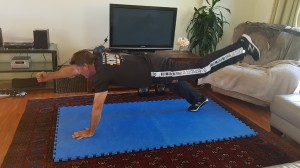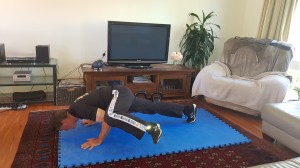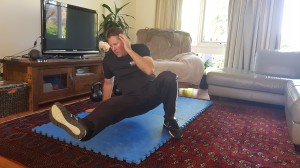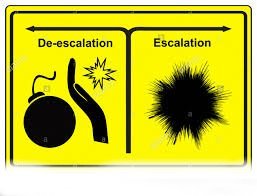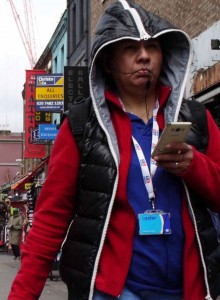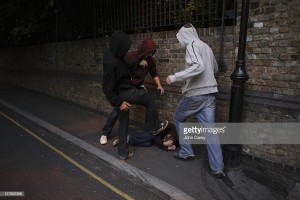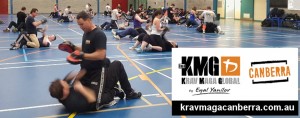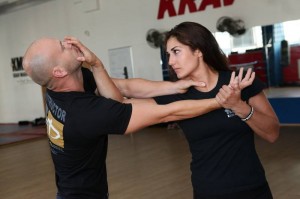Aspirations And Abilities, don’t get them mixed up!
Where am I going with that?
Well, it’s a fairly self explanatory statement really, from the perspective of Krav Maga.
Don’t allow your ego or an inflated view of your abilities to get you into trouble.
It’s more common than you may think, just add bravado from your mates and or alcohol, all of a sudden you have a very inflammatory situation.
On the one hand you may have mates egging you on as they want to see you do your stuff, on the other it maybe that you think highly of the skills you have acquired, and believe in your abilities that have so far only been tested in the Dojo.
Very dangerous indeed!
The outcome may be very different to what you may expect.
The truth is, it’s all about understanding not only your own abilities, but those of the aggressor that you are dealing with, and….. understanding the situation that you find yourself in.
What environmental factors are going to work in your favour or the aggressors favour?
One thing I learned whilst working on the door in both Canberra, Australia and London, England is that some of the most unassuming characters can, when push comes to shove, be far more inclined to extreme violence than you may expect.
Whether it’s purely out of survival instinct or just second nature is also something that can vary hugely from person to person, country to country.
For instance, I ran security in a club in London in the late 1980’s when soccer hooliganism was in full swing.
It never ceased to amaze me how guys and girls who seemed so placid and unassuming on the exterior could with very little provocation erupt into extreme violence.
When I say extreme violence, I’m talking about glassing / stabbing people or picking up objects to strike people with or pack violence.
I saw on many occasions, much larger people do terrible things to smaller people ( kind of common in society unfortunately ) but I also witnessed on many occasions, incidents where people who appeared to believe, that they were far more capable than their opponent, come unstuck when the smaller person resorted to an extreme level of violence straight off the bat.
So why am I bringing this up?
Well, when we as Instructors of Krav Maga talk to our students we spend a lot of time talking about situational awareness, don’t get into a bad situation in the first place.
How do you achieve that?
Have your eyes open and observe, observe, observe your environment and act accordingly!
Which brings me to the subject I really want to talk about.
What is the appropriate response to the situation that you find yourself in?
The first thing we should understand as Instructors and students is that every situation is going to have a completely different set of variables, that can and will lead to different outcomes to any other situation that we have been in previously.
That being said, what are the main things to take into consideration in the moments you have to assess the situation before something happens?
Well if you’ve been alert and observant you’ll already have a bit of a grasp of your environment and what can be used to your advantage or disadvantage.
Eg:- Common objects to use as shields or tools for striking, obstacles you can use to prevent people getting to you, your exits, choke points to be avoided or capitalized on, lighting conditions that may be used to your advantage etc.
The Elephant in the room however, is the decision to engage or not to engage and if you do, how do you engage?
Is it a verbal response of aggression or de-escalation or outright pre-emptive attack?
The first 2 both require the appropriate body language to achieve their goals and you need to be prepared to back them up with the appropriate actions. Pre-emptive attack requires a strong mind set and a reasonable skill set, all be it gross motor skill orientated.
I don’t normally talk about the aggressive verbal response as we teach people to de-escalate all the time, it does however have its place as a tactic and if used appropriately can stop things progressing further. You will need to appear, at least, prepared to back it up. And if push comes to shove be pre-emptive or disengage rapidly.
Which brings me to something one of my Instructors said to me recently, You Don’t Practice What You Preach!
Yep, sometimes that’s true! It comes down to Experience and the ability to rapidly assess the situation and make the appropriate decisions.
I don’t recommend the aggressive approach to most students because it’s inappropriate to their level of ability.
Remember Aspirations and Abilities, you shouldn’t arm someone with a tool they will never have the ability to use!
What I’m trying to say is, if you understand the difference between your abilities and the potential abilities of the attacker / attackers and your environmental constraints or advantages, you can choose to posture and verbalize aggressively. It is a valid option.
It’s not for everyone though, and as instructors we need to make that clear.
The important word here is Experience!
You need to know when to be aggressive ( if that’s your solution, be prepared to back it up ) and when to be submissive in your appearance.
The latter usually incorporates verbal de-escalation and a show of empathy and submissive body language, but still needs to be executed with a level of confidence and no apparent cowering or apparent fear, even if you feel it, as this may well trigger an assault by the aggressor.
Pre-emption is an appropriate response here, if the submissive approach doesn’t achieve your goals and you feel an attack is iminent. Lead them down the path, make them think you’re weak then explode!
I’m frequently pointed to videos on facebook by people showing all kinds of different approaches to self defence. A couple of guys that come to mind are Geof Thompson and Lee Morrison, both English guys and both are very experienced and have good stuff to offer.
Their approach is very aggressive, with pre-emption frequently being the preferred approach, as it is suited to the UK environment where violence is a national pastime ( no offence to any Britts out there ) and generally at an extreme level.
These guys have a good understanding of extreme violence and teach appropriately. Credit where credit’s due.
However for the Australian situation, where people generally don’t have a proclivity to such levels of violence it would be inappropriate to teach this way on a regular basis and as the norm, the aggressive approach is a useful tool but its application is problematic if you lack experience in such situations. Not to mention you’d leave yourself open to legal ramifications.
However we can use the very aggressive verbal and posturing approach that we see in Geof Thompson or Lee Morrison’s videos when appropriate, as this may well be enough to defuse the situation, sometimes saying nothing and just glaring at someone aggressively and using strong body language is enough!
Again it’s a case of assessing what’s required and most importantly understanding the difference between your Aspirations and Abilities!
Conclusion:-
- Remember every situation will be different, so train for many different scenarios in different environments.
- Understand your strengths and weaknesses both mentally and physically.
- Never underestimate the aggressors abilities and act appropriately to the particular situation you find yourself in.
- Remember that being overtly aggressive is okay if used at the right time in the right situation, but shouldn’t be your go to solution for every situation!
- Be nice! And de-escalate where possible!
Blog post by Dave Sargent, Senior Instructor and school owner at Krav Maga Canberra
Click here to:-
Join us at Krav Maga Canberra









